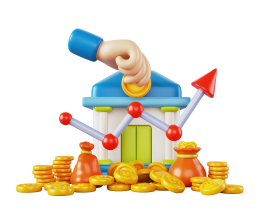Cost of Living in Tallinn

Rebeka Meszaros
Rebeka is a professional content writer who specializes in marketing, business, travel, and expat tips. She enjoys sharing practical, down-to-earth advice, whether it's helping businesses better their marketing strategy or providing insights about living overseas. Rebeka adds a personal touch to her writing, ensuring that every piece connects with readers.

Oleksandra Dosii
Oleksandra is a dedicated marketer with a passion for growing HR-tech products. She believes content marketing is about delivering high-quality content that provides value—not just generating leads. Since 2016, Oleksandra has been involved in tech talent relocation.

Start Advertising

Tallinn, the capital of Estonia, offers a more affordable cost of living compared to many other European cities. A single person can expect to spend around €1,594 per month, while a family of four might need about €4,225 monthly (Source: Numbeo).
Let’s break down the expected cost of living in Tallinn, covering essentials like food, transportation, rent, utilities, and childcare, to help you plan and manage your budget more effectively.
Is Tallinn expensive?
Tallinn ranks 93rd city in Europe when it comes to cost of living, but is the most expensive city in Estonia. For a family of four, the estimated monthly expenses are around €3,031, plus rent of about €1,194, bringing the total to approximately €4,225. For a single person, the costs are around €899, with rent at €695, which comes up to roughly €1,594 per month.
When compared to other major cities, Tallinn is far more affordable. For instance, in London, a single person’s monthly cost is €3,875, meaning Tallinn is about €2,281 cheaper per month. In contrast, Berlin's monthly total for a single person is €2,277, making the cost of living in Tallinn around €683 less expensive than in Berlin (Source: Numbeo).
Rent per month
Here's a look at the average monthly rent in Tallinn, depending on the apartment size and location (Source: ):
- Apartment (1 bedroom) in the city center: €695
- Apartment (1 bedroom) outside of center: €490
- Apartment (3 bedrooms) in the city center: €1,194
- Apartment (3 bedrooms) outside of center: €865
Tallinn's rental market is steadily growing, with apartment prices up 11.05% in 2024 so far, even though demand is dropping. Sales have fallen by 14.1% in 2023, and another 6.5% in early 2024 (Source: Global Property Guide). For expats, this means rents are likely to keep rising, increasing the cost of living in Tallinn, especially in popular districts like Kalamaja and Kadriorg. However, fewer new apartments are being built, so competition for rentals will stay strong, especially in central locations.
The best areas to live in Tallinn:
- Kalamaja – Trendy, and artistic, with wooden houses and vibrant cafes. Ideal for young professionals and creatives.
- Kadriorg – Luxurious, family-friendly, with parks and historical sites like Kadriorg Palace. Quiet and green.
- Pirita – Beachside and peaceful, great for nature lovers and outdoor activities.
- Old Town (Vanalinn) – Historic, charming, and perfect for those who enjoy medieval architecture and culture.
Up-and-coming areas:
- Telliskivi – Creative and growing, known for nightlife, restaurants, and its artsy vibe.
- Ülemiste – A developing business hub, attractive to young professionals.
- Kristiine – Close to the center, quieter, and popular with families.
The less desirable neighborhoods:
- Lasnamäe – Affordable but dull, with Soviet-era buildings and far from city attractions.
- Kopli – Rough and underdeveloped, but slowly gentrifying. Still less desirable for now.
How to find an apartment in Tallinn
When renting in Tallinn, it's crucial to already be in the country as the rental market moves fast, and many listings get taken within days. Start your search using platforms like KV.EE or City24.ee, which offer the widest range of listings, often in English. Facebook groups like Expats in Tallinn/Estonia are also helpful for finding direct rentals from owners, potentially avoiding the usual broker’s fee (one month’s rent). Always ensure you ask landlords or agents for a breakdown of additional costs, as utilities (electricity, water, heating) are not included in the rent. Always request to see utility bills for both summer and winter months to avoid surprises and keep your cost of living in Tallinn as low as possible.
When signing a lease, make sure the contract is written in a language you understand — ask for an English version if needed — and verify all key details such as the rent amount, deposit, and any move-out or damage clauses. Importantly, confirm with the landlord that you will be able to officially register at the address, as you’ll need this for residency, work permits, and access to free public transport for residents. Be aware that some landlords may be hesitant to allow registration, especially if they wish to avoid taxes. If you're unsure about the contract, consider getting legal advice from services like LEGID, which connects you with affordable legal support. Finally, be quick — arrange viewings and meetings quickly as the best apartments go fast, especially those listed without brokers.
If you need assistance during your housing search in Tallinn, we’re here to help. We can provide a quote or connect you with our trusted partners, who have successfully helped many of our users find housing across the city.
Property prices
The average price per square meter to buy an apartment in Tallinn is around (Source: Numbeo):
- City center: €4,277/sqm
- Outside of the city center: €2,966/sqm
When buying property in Tallinn, Estonia, foreigners enjoy many of the same rights as locals, with only a few restrictions. Non-EU citizens are limited in purchasing certain types of land, such as large agricultural plots or properties on select islands like Saaremaa and Hiiumaa, due to national defense laws. First, you should confirm the property is listed with the Estonian Land Register and make sure there are no issues like unpaid debts or mortgages. It's a good idea to hire a lawyer to help confirm the ownership, handle property checks, and manage contracts.
Just like anywhere else, purchasing a property in Estonia comes with associated taxes and fees. Expect to pay a stamp duty of 0.3-0.5%, notary fees ranging from 0.02-0.84%, and a registration fee of 0.25% of the property’s value. For newly built properties, VAT of 20% applies, and owners are subject to an annual land tax between 0.1% and 2.5% (Source: Lawyers Estonia). Foreigners can also secure property loans in Estonia with requirements such as having a valid residence permit and stable income. For more details on purchasing and registering property, visit the Estonian Land Register and contact Estonian lawyers for legal assistance.
Utilities
Here’s what you are likely to spend on monthly utilities in Tallinn (Source: Numbeo):
- Basic utilities (electricity, heating, cooling, water, garbage) for 85m² apartment: €289
- Mobile phone monthly plan with calls and 10GB+ Data: €15
- Internet (60 Mbps or more, unlimited data, cable/ADSL): €27
These costs can add up over the year, but you can cut them down by following these simple tips:
- Monitor hourly energy prices: Use tools like elektrihind.ee to track daily and hourly electricity prices. Do your laundry or dishwashing during off-peak hours for lower costs.
- Unplug devices in standby mode: Electronics like TVs and computers consume power even when not in use.
- Use LED lighting: Replace regular bulbs with LED lights, which are more energy-efficient and longer-lasting. They help cut down on electricity usage.
- Review your electricity plan: Make sure you’re on the best plan. Compare options on Energiaturg.ee for better rates, especially if your usage varies by time of day.
- Look around for better deals: For cheap mobile plans, check out eSim.net.
Public transport
Tallinn has a well-connected public transport system with buses, trams, and trolleys that operate daily from 6:00 to 23:00. If you’re a registered resident, public transport is free to help with your Tallinn cost of living, but you'll need an Ühiskaart (fare card) linked to your ID. Non-residents can purchase tickets via contactless payment or through the Ühiskaart system.
Tallinn travel ticket (Source: Pilet.ee):
- One-hour ticket: €2
- One-day ticket: €5.50
- Three-day ticket: €9
- Five-day ticket: €11
- 30-day ticket: €30
- Tallinn Card (unlimited transport, 24h): €27
Taxi (Source: Numbeo):
- Taxi start (normal tariff): €3
- Taxi 1 km: €0.80
- Taxi 1 hour waiting: €12
- From the airport to the city center: €10-15
Food
When living in Tallinn be prepared to spend around €300 per month on groceries. Expats have plenty of shopping options, from budget stores like Rimi, Maxima, Selver, and Prisma to more upscale spots like Kaubamaja Toidumaailm, Stockmann Delikatess, and Solaris Toidupood. Many supermarkets offer loyalty cards, such as Rimi’s Kliendikaart, which give discounts and cashback to help you save. For specialty or imported goods, Stockmann and Solaris are good picks, while Maxima and Prisma are great for everyday shopping. You can also order groceries online from services like Barbora and Coop Eesti for home delivery.
Here’s an estimate of how much you might spend on groceries per month in Tallinn, depending on diet and shopping habits (Source: Quora):
- For a single person: €200-€300
- For a couple: €400-€600
- For a family of four: €600-€800
Here’s a list of typical grocery items to give you an idea of local prices (Source: Numbeo):
- Milk (1 liter): €1
- Loaf of fresh white bread (500g): €1.20
- Rice (1kg): €2.10
- Eggs (12): €2.50
- Chicken fillets (1kg): €7.10
- Domestic beer (0.5 liter draught): €5
Childcare
In Estonia, children aged 18 months to 7 years can attend public daycare (sõim) or kindergartens (lasteaed). To apply, your child must be registered in the Estonian population registry, and your family should reside in the local municipality.
These are your childcare options in Tallinn (Source: Quora):
- Public daycare (Sõim): For children aged 18 months to 3 years. It's the most affordable option, costing about 10.6-12% of the minimum wage (around €45 per month), plus a small daily meal fee of €1.50-2.
- Municipal kindergartens (Lasteaed): For kids aged 3 to 7 years. These follow the national curriculum, with fees similar to daycare — about €45 per month plus meal costs.
- Private kindergartens: Offer services like municipal kindergartens but at higher costs, ranging from €250 to €600 per month. Many private options offer international curricula and English-speaking programs.
- International preschools: These schools offer education in English, with fees between €500 and €1,000 per month, depending on the program.
- International primary school, yearly for 1 child: €6,318
- Find a babysitter here.
If you're on parental leave or unemployed, your child can still attend municipal daycare for up to 15 hours a week. The fees are based on your income, and there’s a national limit to keep the cost of living in Tallinn down for families.
Estonia has a very generous parental leave system, offering up to 435 days (about 1.5 years) of paid leave. During this time, one parent gets paid based on their salary. After the paid leave, parents can stay home with their child until they turn 3, and still have their job waiting for them. For more information, you can visit the Estonian Education Information System or contact the Tallinn City Government for information on childcare.
International yearly school fees (Source: International Schools Database):
- International School of Tallinn: €7,900-€10,650
- Tallinn European School (TES): €4,000-€5,700
- International School of Estonia: €8,000-€26,000
- International primary school, yearly for 1 child: €6,327
Need help finding housing abroad?

Fill out this form

Shoot us an email with your inquiry at [email protected].



















